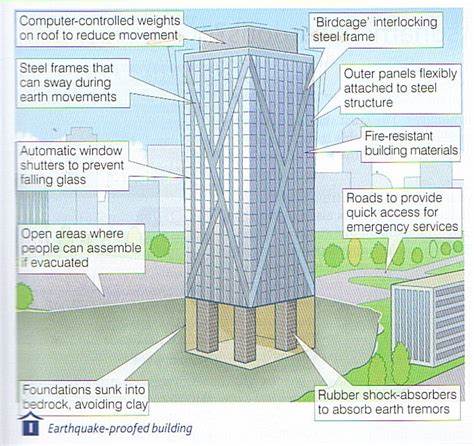
Introduction
The increasing frequency and intensity of natural disasters have highlighted the importance of smart buildings in disaster resilience. This article explores the relevance of studying lessons from past disasters and examines how smart buildings have evolved in disaster management over the years.
Historical Background
As disasters struck, building design and resilience underwent significant transformations. Early examples of disaster resilience in building design showcased the importance of incorporating resilient features to withstand natural disasters and ensure the safety of occupants.
Key Concepts and Definitions
To understand the role of smart buildings in disaster resilience, it is essential to define key concepts. Smart buildings encompass features such as automation, connectivity, and intelligent systems that optimize energy efficiency and enhance occupant comfort. Disaster resilience focuses on a building’s ability to withstand and recover from the impact of disasters, including structural integrity, emergency preparedness, and adaptive capacity.

Main Discussion Points
The integration of smart technologies in building design and operations has proven instrumental in disaster resilience. These technologies offer numerous benefits, including real-time monitoring, early warning systems, and efficient response mechanisms. Examples of smart technologies used in disaster response and recovery include sensor networks, smart grids, and automated emergency systems.
Data analytics and monitoring systems play a crucial role in early warning and response. By analyzing data, these systems can predict and assess risks, enabling proactive measures to be taken. Monitoring systems, such as earthquake detection sensors and weather monitoring stations, provide timely information for effective disaster management.
Collaborative approaches and public-private partnerships are paramount in smart building resilience. Collaboration among government agencies, private companies, and community organizations strengthens disaster resilience efforts. Successful public-private partnerships have been observed in joint disaster response planning, resource sharing, and innovative funding models.
Case Studies or Examples
The Edge building in Amsterdam serves as a remarkable case study in smart building resilience. Lessons learned from its response to natural disasters emphasize the importance of resilient design, effective communication systems, and integrated emergency response plans.
The Pearl River Tower in Guangzhou showcases the successful implementation of smart building design features for disaster resilience. Lessons learned from this case study highlight the significance of advanced structural systems, intelligent energy management, and disaster-resistant materials.

Current Trends or Developments
Advancements in the Internet of Things (IoT) have revolutionized smart buildings. IoT enables seamless connectivity between devices and systems, allowing for real-time data exchange and intelligent decision-making. This technological advancement enhances the operational efficiency and disaster resilience of smart buildings.
The integration of renewable energy sources in disaster-resilient buildings is gaining momentum. By harnessing clean and sustainable energy, smart buildings not only reduce their carbon footprint but also ensure a reliable and decentralized energy supply during disasters. This integration enhances the overall resilience of the building and its ability to function autonomously.
Research findings consistently highlight the benefits of smart building resilience, including reduced downtime, lower maintenance costs, and enhanced occupant safety during and after disasters. The adoption of smart technologies in building design leads to long-term savings and improved sustainability.
Challenges or Controversies
Privacy and data security concerns pose challenges in smart buildings. As buildings become more interconnected, the collection and analysis of data raise privacy concerns. Measures must be in place to protect the personal information of occupants while still leveraging data for disaster resilience efforts.
Integrating smart technologies in building design can come with cost implications. The upfront investment in advanced systems and technologies may deter some developers and building owners. However, the long-term benefits, such as energy savings and operational efficiency, outweigh the initial costs.
Ethical considerations in disaster response and recovery require careful attention. The use of smart technologies should not compromise human rights or create unequal access to resources. It is crucial to prioritize equity, inclusivity, and ethical decision-making in disaster resilience efforts.

Future Outlook
The potential advancements in smart building technologies are immense. As technology continues to evolve, buildings will become more intelligent, adaptive, and sustainable. Innovations such as artificial intelligence, blockchain, and virtual reality hold promise for further enhancing disaster resilience.
The expansion of disaster resilience strategies beyond natural disasters is essential. Buildings must be designed and operated to withstand not only natural disasters but also human-induced disasters, such as terrorism and cyber-attacks. The focus should be on building holistic resilience that encompasses a wide range of threats.
Smart building technologies have implications for urban planning and sustainable development. By integrating resilience into the urban fabric, cities can become more prepared and responsive to disasters. This approach promotes sustainable growth, reduces vulnerability, and enhances the quality of life for residents.
Conclusion
In summary, smart buildings play a critical role in disaster resilience. By integrating smart technologies, leveraging data analytics, and fostering collaboration, buildings can withstand natural disasters and recover quickly. Studying smart buildings and disaster resilience is of utmost significance as it paves the way for future research, implementation, and ultimately, a safer and more resilient built environment.




